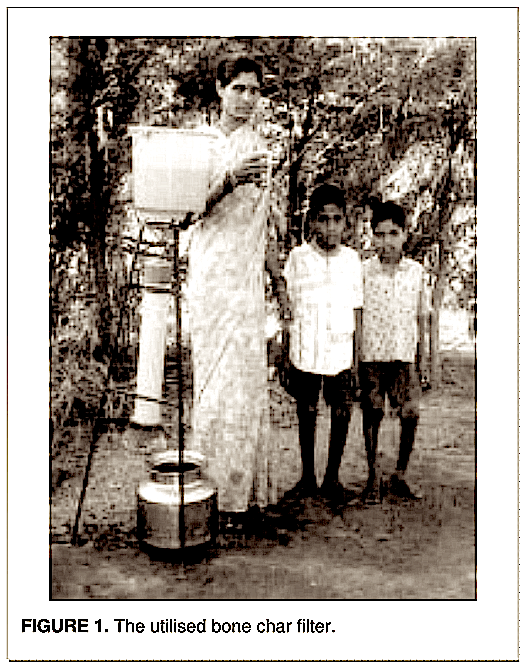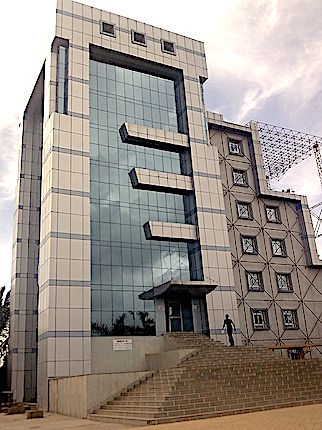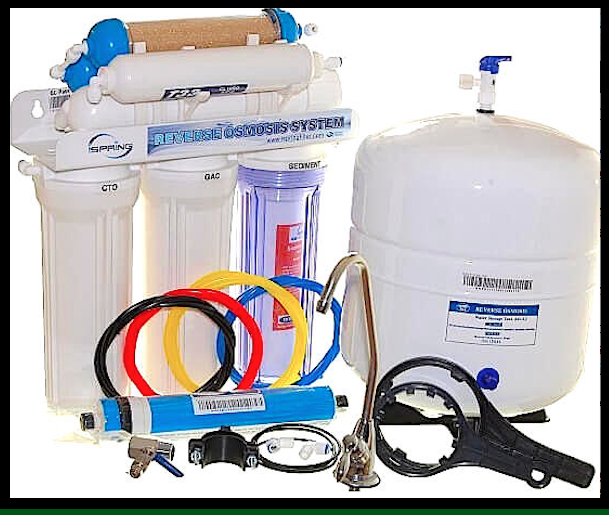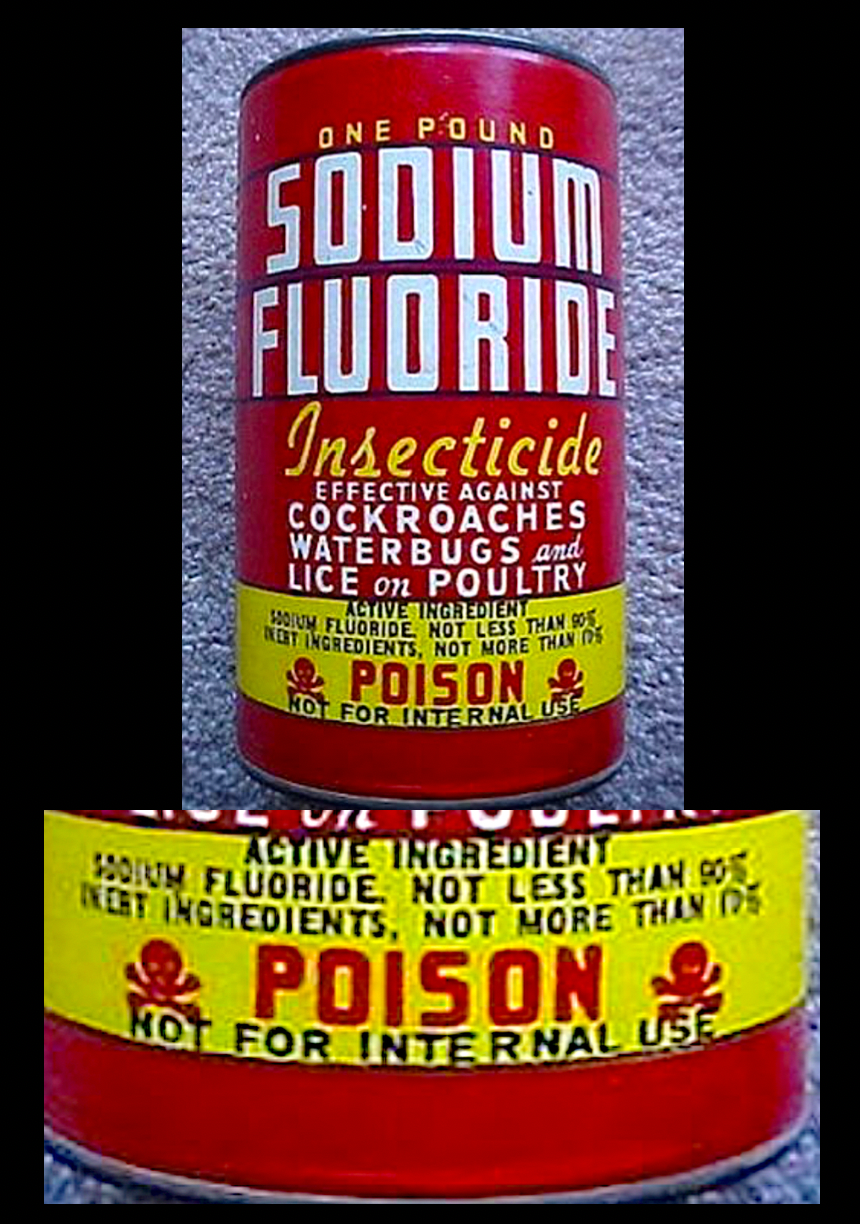06 April | FLUORIDE & HEALTH | admin
FLUOROSIS – AND WAYS TO CONTROL IT – India
The TOTAL daily intake through water, food and air
determines the development of fluorosis.
[As well as the level of vitamins & minerals in the diet.]
Clean Drinking Water Out Of Thin Air!

 Review on de-fluoridation
Review on de-fluoridation
techniques of Water India
The International Journal
Of Engineering & Science
WANG Hongtao-School of Environment – 清华大学
“The reason why I am so intensely involved
in the Fluorosis Control Programme
in India, is for the simple reason that
millions in India suffer from Fluorosis
(6 million children & 60 million adults)
by just drinking poisoned water as
they have no knowledge about it.
The disease is very prevalent in rural
Indian villages; the people are
poor and they have no way
to get out of the disease.”
www.fluorideandfluorosis.com
Fluorosis is crippling India & needs attention
More people suffer from fluorosis in India
than there are people in Australia!
BONE CHAR DE-FLUORIDATION
Development of magnetic nanoparticles for fluoride
and organic matter removal from drinking water
The Egyptians used charred wood as early
as 1500 B.C. for medicinal purposes
and as a purifier in other connections.
Similar early use was made of it
in India.
Charred defatted bone char was
used for decolorizing sugar liquors
around 1820 (Andersen, 1962).
Medical Geological Assessment Of Fluoride
Contaminated Groundwater In Parts
Of Indo-Gangetic Alluvial Plains
See ‘Krishna Water’ below
Ujjani Dam, also known as Bhima Dam or
Bhima Irrigation Project, on the Bhima River,
a tributary of the Krishna River, is an earth
fill cum Masonry gravity dam located
near Ujjani village of Madha Taluk
in Solapur district of the state
of Maharashtra in India.
Endemic skeletal fluorosis is a disease caused by excessive
ingestion of fluoride through water, food or air.
The upper limit of optimum fluoride level in
drinking water for a tropical country like India is 0.5 ppm.
The upper limit of safe total intake of fluoride from food
and water per day for an adult is 5 milligrams (WHO-2002).
.
The TOTAL daily intake through water and food determines
the development of fluorosis.
First ever cases of endemic skeletal fluorosis and its neurological manifestations in the world were recorded from Podili, Darsi and Kanigiri areas of Andhra Pradesh in 1937.
Subsequently cases of fluorosis were recorded from Nalgonda and other areas of the Andhra Pradesh state and other parts of India.
It is now estimated that 60 million people are living in these endemic areas and are at risk of contacting the disease and 2 million people are crippled because of it.
The incidence of fluorosis affected districts in India are listed alphabetically:
Assam2; Andhra Pradesh= 17; lBihart=8; Delhi4; Gujarat= All except Dang; Haiyana 12; Jammu & Kashmir=1; Kamataka 14; KeraI=3; Maharashtra= 10; Madhya Pradesh= 10; Orissa= 3; Punjab=13; Rajasthan= All 32 districts; Tamil 4adu 8; Uttar Pradesh= 7 and West Benga=4.
Hence, skeletal fluorosis continues to be a major public health problem in India. The factors, which govern the development of fluorcsis, are the following:
1.) High levels of fluoride in drinking water supplies and in the foodstuffs grown in these endemic areas.
2.) Tropical weather and hard manual labor by affecting the intake of water.
3.) Poor nutrition and diets deficient in their content of calcium, magnesium and vitamin C aggravate fluoride toxicity. High intake of calcium reduces the amount of absorbed into the bones. Magnesium has peculiar relationship with fluoride and its optimum intake helps in elimination of fluoride from the body. Vitamin C is beneficial in some way in reducing fluoride toxicity. Diets deficient in calories and calcium intake increase the incidence of fluorosis (WHO-2002).
4.) Renal disease aggravates fluorosis by increased deposition of fluoride in the bones.
A diseased kidney cannot handle fluoride excretion from the body and hence its increased deposition in the bones.
5.) Presence of abnormal amounts of certain trace elements in the drinking water supplies such as strontium, uranium etc. Strontium levels in drinking water supplies in some endemic areas are high and strontium is a bone-seeking element like fluoride and both these aggravate the bony changes.
In a study of 94 drinking water samples from the endemic fluorotic villages of Prakasam and Nalgonda districts the fluoride and strontium levels are as follows:
Fluoride levels ranged between 0.1 to 9.5 ppm for a mean of 2.009 ppm and strontium levels ranged between 4.91 to 9931.74 ppb for a mean of 1670.02 parts per billion. Any water strontium levels of over 1000 ppb are suspect. Increased levels of fluoride and strontium appear to play a role in the severe forms of fluorosis that is witnessed in some endemic areas of fluorosis in Andhra Pradesh especially in Prakasam where fluoride levels are not very high.
.
Some elements like uranium are nephrotoxic and may aggravate fluorosis problem. Levels of trace elements such uranium, selenium, zinc, iron, lithium, lead, barium, aluminum etc were in abnormal concentrations in some of the drinking water supplies of villages in Prakasam and Nalgonda districts of Andhra Pradesh. Aluminum is known to increase fluoride absorption from the gut and hence its abnormal concentration in water supplies is harmful. The role of these other elements except those of strontium, aluminum and uranium in fluoride metabolism are not known at present time. De fluoridation plants are based on adding aluminum compounds to the water containing high levels of fluoride. It may be noted hundreds of crores of rupees were spent on erecting these plants in 1980’s 1990’s and not a single one of them are working now. So is the fate of household de fluoridation units. Besides there is the risk of increased intake of aluminum which is being incriminated for the causation of Alzheimer’s disease as well as motor neuron disease for which there is no therapy like AIDS disease.
Tea contains exceptionally high content of fluoride and each cup may add up to 2 milligrams of fluoride. Ideal solution for skeletal fluorosis is its prevention by providing safe drinking water and providing such water for cultivation of crops in these endemic areas, This appears to be only a very distant dream. Government of India envisaged health for all by 2000 in 1987 AD and planned provision of safe drinking water to all villages by that date. The plans failed miserably and now the authorities have become more pragmatic. One’ of the ‘millennium development goals’ of 2002 is to provide safe drinking water to half the rural population by 2015. Hence prevention of fluorosis is not possible in the near future and at least efforts must be made to lessen the suffering of the people by improving their nutrition. The situation in certain parts of Andhra such as Nalgonda is very grim. When Daver first recorded cases of skeletal fluorosis from this region in 1945 AD and by Siddique in 1955 AD, there were no children with deformed limbs. These cases with deformed limbs were recorded in 1970’s. Rural nutrition in the past few decades has gotten worse in many parts of state and in other parts of the country. National institute of nutrition conducted surveys of status of rural nutrition in 715 villages of seven states in 2002 and 2003. Eighty villages in AP were studied and AP has the distinction of having highest incidence of dental fluorosis among seven states. The results of nutrition study are contained in National nutrition monitoring bureau reports 21 and 22, which reveal the appalling state of nutrition of rural population in the country. Sixty percent of the children below 6 years of age are malnourished and a third of them suffer from severe under weight problem. Only a third of the children studied were getting an optimum diet. Calcium intake is exceptionally low in all states and calcium does playa big role in Nalgonda having very high incidence of skeletal fluorosis in our country. Drinking water supplies of Nalgonda have a high content of fluoride because the calcium content of Nalgonda soils and rocks is low. This allows more fluoride to seep in to the water supplies (Netherland study- 1986). Siddiqui study revealed that avenge daily intake of calcium in Nalgonda individuals was only 300mg whereas it was 900 mg in Punjab. NNMB report of 2002 reveals that calcium intake of rural population is appallingly low in Andhra and hardly averages around 300 milligrams whereas it should be around 800-1000 milligrams in growing children. Hence, there are no children with deformed limbs in Punjab villages with simdar levels of fluonde in drinking water supplies. Nutrition status study of 50 children in Sharbanapuram village of Aler Mandal of Naigonda revealed that only one boy was normal as per BMI and percentile studies. Midday meal scheme has not helped these children in Nalgonda in this regard. Children hardly get 300 calories of diet and most of the times the food supplied is not even hygienically good. National family health survey-Ill by the government of India in 2006 in 29 states revealed that 45 % of the children below are undernourished and 57 % of women are anemic. All government policies to improve nutrition of rural folk have been a dismal failure so far. What needs to be done? One has to pragmatic. Ideal way would be to supplement the diet of children in the endemic areas with calcium, magnesium and vitamin C. This was also the basis of Chinese research work in early 1990’s. The best way would be to give a glass of milk and a banana to every school-going child in these endemic areas. Milk is perishable and can be adulterated. A pouch containing 300 ml of milk becomes very expensive. A tablet containing 5,0 milligrams of calcium, 300 milligrams of magnesium and 40 milligrams of vitamin C with vitamin D to improve absorption of calcium would be cheap and practical in addition to midday meal scheme, which needs to be improved. Since anemia is widely prevalent in rural population it may be advisable to add iron also to this tablet. The skeletal fluorosis was discovered in our country in Prakasam district seventy years ago and this continues to be major health problem even today. All efforts to contain this disease have been a dismal failure so far. Unless pragmatic steps are taken this problem going to affect the lives of millions of people in our country for a long time to come.
There are three factors for the causation of skeletal fluorosis,
Water, food and nutrition.
Ask for Krishna water for drinking and cooking for every fluorotic village.
Try for Krishna water for cultivation in future. Improve the nutrition of the population especially those of growing children by whatever means practicable. Avoid drinks such as tea, which is very rich in fluoride and also seafoods. Avoid analgesics, which could damage the kidneys and aggravate the problem in these areas where studies reveal a higher incidence of kidney disease. PREFERRED FOODS IN FLUOROTIC REGIONS A diet rich in calcium, magnesium and vitamin C would greatly benefit the population living in areas where soil and water fluoride levels are high while measures to provide safe drinking water could benefit by reducing fluoride intake, a diet enhancing calcium, magnesium and vitamin C intakes would considerably reduce the basic pathology associated with fluorosis. However these food sources should be grown in no fluoride areas and provided for consumption in region with fluorosis. Though there are several food sources only those which are commonly consumed in region of AP and which are affordable to the lower socio-economic groups are suggested.
The resource for this compilation is the:- “Nutritive value of Indian foods”
World Bank Report & AP High Court Writ Petition on Fluorosis in Nalgonda
Role of Beneficial Bacteria on Contaminated
Fluoride Drinking Water – Das
More Info on:
…The Nalgonda Fluorosis problem [India] is a stigma that has stuck for generations. Severely disabling skeletal fluorosis affects lakhs [100,000 ] of people in just one district of the country. The last official count of patients in 2001 was around 6.5 lakh affected fluorosis patients and out of which around 75,000 severely skeletal fluorosis affected people → HERE ←
“Like me, anyone over 45 years of age suffers from dental fluorosis here due to the water we drank as children. Thankfully, we are now getting water from the Krishna river, so the present generation is safe,” said Bokka Bhupal Reddy, sarpanch of M. Edavalli village.
He recalled that people there were so poor at one point that they preferred to sell the eggs laid by their chickens instead of eating them.
THE UNIVERSITY OF BURDWAN BURDWAN-713104
WEST BENGAL, INDIA
~ Curiosity, Creativity, Competence, Compassion ~
“FLUORIDE POLLUTION AND ITS EFFECT ON WATER AND
VEGETATION IN BIRBHUM DISTRICT, WEST BENGAL”
See thesis below ⇓ Very detailed diagrams + more photos.⇓
Thesis
by
KARTICK CHANDRA PAL, M.Sc. (Chem)
[ We thank you for such a mammoth undertaking.]
Extract:
…Other non-skeletal health disorders that occur due to high fluoride intake through drinking water are muscle fibre degeneration, low haemoglobin levels, deformities in RBCs, excessive thirst, headache, skin rashes, nervousness, depression, urinary tract malfunctioning, nausea, abdominal pain, tingling sensation in fingers and toes, reduced immunity, repeated abortions or still births, male sterility, etc (Meenakshi and Maheshwari, 2006)…
New and Comprehensive!
Black Tea Source, Production & Consumption:
Assessment of Health Risks of Fluoride Intake in New Zealand
U.S. Department of Agriculture
Nutrient Data Laboratory Beltsville
Human Nutrition Research Centre
Agricultural Research Service
Contains fluoride values for 427 foods across 23 food groups.
~ Comprehensive – large charts ~
Fluoride Content Of Major Foods
Effect of fluoride exposure on the intelligence of school children in Madhya Pradesh, India
⇒ Human bone fluorosis – image ⇐
 See also
See also
TULSI PLANT FOUND TO CLEANSE WATER OF FLUORIDE
Laxmidhar Panda, Dr. B.B. Kar & Dr. B. B. Patra
Research Scholars, School of Applied Sciences,
KIIT University, Bhbaneswar, Odisha, India
Key words: Fluorosis, Fluoroapatite,
Biomineralisation, Calcification, Osteosclerosis.
…Excess fluoride may lead to an increased demineralization
leading to the precipitation of Calcium phosphate and
Calcium fluoride and it interferes with calcium metabolism...
Tamarind (Tamarindus indicus) intake is likely to help in delaying
progression of fluorosis by enhancing urinary excretion
of fluoride. [This tree grows well in SE Queensland.]
– —–oOΘOo—– –
TAMARINDUS INDICA

Turmeric Shown To Protect Brain Against Fluoride Poisoning
REMOVING FLUORIDE FROM OUR BODIES
TOTAL AVOIDANCE IS VERY DIFFICULT
IF THE WATER SUPPLY IS FLUORIDATED:
1.) Absorption Though Skin. Cleaning, swimming, showering/bathing and clothes washing will result in some assimilation through the skin.
2.) Boiling water will NOT remove fluoride; indeed it will increase the concentration. This will occur due to evaporation e.g. electric jugs, kettles, aquariums and (wet, atmospheric) cooling towers.
3.) Boiling water will remove chlorine, but NOT fluorides.
4.) Carbon filters will only remove fluoride for the first 30-50 liters. There is some fluoride reduction (30-40%) progressively failing over time. Carbon filters are therefore NOT an option for fluoride removal.
5.) Reverse osmosis
⇒ The Borax Conspiracy By Walter Last. ⇐
⇑ We recomend this ⇑

— DENTAL FLUOROSIS —
NOW THE MOST COMMON DENTAL
DISEASE IN AUSTRALIA
DENTAL FLUOROSIS, is the visible mottling of teeth.
IT IS A PATHOLOGICAL CONDITION.
IT AFFECTS HUMANS AND ANIMALS.
RECORDED ON THE TEETH OF MEXICANS IN 1888
Dental fluorosis also indicates the deposition of fluoride in the bones – skeletal fluorosis, causing brittleness in later life, – especially hip fractures in humans.
It can occur after teeth formation but will NOT be recorded on the teeth after they are formed. Dental fluorosis is not reversible and in more severe cases, causes disfigurement, pitting, staining, positional defects, (malocclusion) brittleness, and facilitates decay.
In these cases fluoride causes the exact problem it is supposed to prevent.
The eruption of teeth, animal and human, is delayed in the presents of fluorides. This delay accounts for the original statistical error – inferring that fluoride reduces decay in children’s teeth – skews the data…
MORE ON DELAYED ERUPTION
The fallacy on which the claim that fluoridation reduces dental decay relies almost exclusively on the direct comparison of the raw data on the prevalence of dental caries in 5 year-old children in fluoridated and unfluoridated areas. Indeed, in some locations – but by no means all – there may appear to be a slight difference, but this vanishes entirely in older children who have their permanent teeth. Predictably, pro-fluoridation lobbyists invariably avoid referring to this far more relevant age group in their attempts to convince listeners of the supposed beneficial effects of fluoride. Making a direct comparison of children’s teeth is difficult because there are many things that can affect a child’s dental health. But the greatest problem with this comparison is that fluoridation inhibits the rate at which the teeth of young children emerge from their gums.
The delay may be from a few months to well over a year, so in fluoridated areas, the teeth of young children are fewer in number, and younger, than those of children in unfluoridated areas.
This renders any comparison of crude data on dental decay in children of the same age completely unscientific and misleading –
in scientific terms, it is a comparison between unmatched samples, and entirely meaningless.
It is therefore improper to compare the dental health of same-age young children, because the effects of fluoridation must be compared on teeth of the same dental age, and not simply according to the chronological age of the children themselves...
“… The results suggest that the consumption of some brands of infant formulae, powdered milk, and soy-based milk in the first year of age could increase the risk of dental fluorosis, reinforcing the need for periodic surveillance of the F content of foods and beverages typically consumed by young children…”
Volcanic activity
Recent June 2019
ARGUING WITH HISTORY
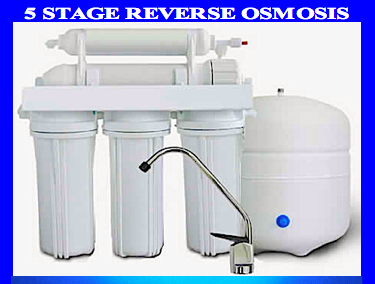
[There are thousands of these installed in Australian homes,
so to try and prove fluoridation is effective,
is statistically impossible.]
1.] Use Reverse Osmosis Filtration. It will need regular servicing and wastes 2-4 times the saved water to continually wash the filtering membranes. ( ONLY a 0.0001 micron membrane will remove fluoride, however the 0.0002 micron membranes which are being imported from Asia will not.)
2.] Drink Rain Water (from tanks). This can be difficult if you live in a town house, a home unit or a rented property. ♦
3.] Use Steam Distillation. These systems produce clean water using electricity.
4.] Buy Bottled Water. – Bottled water is responsible for over 60,000 tones of greenhouse gas emissions every year. Only 35% of plastic PET gets recycled in Australia the rest becomes landfill. Many brands of bottled water are not fluoride free even if they are labelled “Spring Water.” There is a push to fluoridate bottled water. We can presume this will solve the problem for the bottlers who would otherwise need to install and maintain R.O. filters in their bottling factories.
5.] Move To A Town With No Fluoride In The Water. Many Australians allergic to fluoride have moved to Queensland only to find that Queensland is now being fluoridated…
[ Thank – Anna Bligh]
TOTAL AVOIDANCE IS VERY DIFFICULT IF THE WATER SUPPLY IS FLUORIDATED:
1.) Absorption Though Skin. Cleaning, swimming, showering/bathing and clothes washing will result in some assimilation through the skin.
2.) Boiling water will not remove fluoride; indeed it will increase the concentration. This will occur due to evaporation e.g. electric jugs, kettles, aquariums and (wet, atmospheric) cooling towers.
3.) Boiling water will remove chlorine, but NOT fluorides.
4.) Carbon filters will only remove fluoride for the first 30-50 litres. There is some fluoride reduction (30-40%) progressively failing over time. Carbon filters are therefore NOT an option for fluoride removal for drinking water.
There are only preliminary estimates available regarding how much F. is absorbed through our skin and lungs when we stand naked in our shower or soak in the bath contaminated by fluoridated water – and we pay for this indignity in our council water bill. – We should refuse to pay our water bill if it is poisoned.
♦ First Flush – reduce/divert dissolved the fine suspended contaminants… ⇒ Here
Dr. Steven Levy, D.D.S., and his team found during their study that “fluoride intakes during each of the first four years (of a child’s life) were individually significantly related to fluorosis on maxillary central incisors, with the first year more important.” They went on to warn that “infant formulas reconstituted with higher fluoride water can provide 100 to 200 times more fluoride than breast milk, or cow’s milk.”
Learn more here ↓ http://www.naturalnews.com/030123_fluoride_babies.html#ixzz4DDHhOYhF
FLUORIDATED TOOTHPASTE
DEFENSIVE DIETS WILL NEED TO INCLUDE:
Vitamin C, Calcium, Magnesium, Iodine, Shilajit [minerals], Boron and Strontium, (not Strontium-90) these will need to be part of the diet of every one who is concerned about this problem. “Boron effectively counteracts symptoms of fluoride intoxication in humans (Zhou et al. 1987) and in experimentally poisoned rabbits (Elsair et al. 1980a, 1980b, 1981). Humans suffering from skeletal fluorosis experienced 50 to 80% improvement after drinking solutions containing 300 to 1,100 mg of borax/L daily, 3 weeks a month for 3 months (Zhou et al. 1987). Boron enhances sequestration of fluoride from bone and excretion through kidneys and possibly the intestinal tract (Elair et al. 1980a, 1981).
Borax is a compound form of boron, with oxygen and sodium attached. (However EXCESS BORON CAN CAUSE PROBLEMS for children. – Conditions like ADHD, dyslexia, autism, asthma, allergies, cystic fibrosis, liver and oseophageal cancer can be triggered or made worse with excess boron. Boron increases estrogen and calcium levels and lowers B6, zinc, and blood glucose. Signs of toxicity are nausea, vomiting, lethargy, dermatitis and diarrhea.
The antidote is extra vitamin B2. –
“Boron, Phenols and Health” 1995 by Mary Duncan.
Turmeric shown to protect brain against fluoride poisoning.
Lycopene helps to minimize the toxic effects of fluoride. It is a carotenoid antioxidant that gives fruits and vegetables like tomatoes and watermelon a pink or red colour. It is more powerful than that of other carotenoids, such as beta-carotene. It’s found in tomatoes (especially cooked tomatoes), apricots, guavas, watermelons, papayas, and pink grapefruits.
Societies with poor diets are at greatest risk from fluoride damage, indeed nutrition explains the great variation in damage between individuals, especially variations of vitamin C status: Findings suggest that vitamin C significantly reduced the severity and incidence of fluoride-induced embryo toxicity in rats.
Bromide used in bread making and PBDEs [flame retardants] like fluorides are toxic antagonists of iodine and interfere with thyroid function. (Fluoride was commonly used to treat hyper-thyroidism in the early and mid-1900s at doses commonly ingested by people today).
The renal clearance of fluoride is high compared with other halogens. ⇓
It is directly related to urinary pH.

Even more disturbing than the lie about the “benefits”
of having “optimally fluoridated water,” is the fact that
the majority of physicians do not know how to treat
fluoride poisoning, nor do they even know to
look for it, or diagnose it.
Fluorides have numerous simultaneous inter-reactions
with a range of enzymes, nutrients, nutritional
deficiencies other poisonous substances,
infections, and radiotherapy, so as to justify the term-
‘Multiple Fluoride Inter-reaction Syndrome’.
Who to Complain to on Fluoridation
.





